NASCA, MYSTERIES AND ADVENTURE
.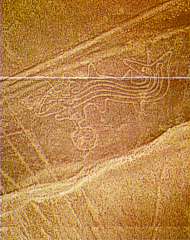 |
This is Nasca, a unique place due to the mysteries of its marvelous lines and figures, drawn with spectacular perfection, by the gods… by aliens… by giants or by ordinary people? The beauty and magnitude of the lines must be observed from above. The drawings and their meaning are even more mysterious than their origin. It is not even known how long it took to create them, nor how the creators were able to measure them with such perfection, since there were no aircraft in those days. This mystery inspires many theories.In terms of science, these lines have a series of characteristics potentially aimed at astronomy or agriculture. Or perhaps they were created to direct extraterrestrial, as the lines are related to the earth’s magnetic field, the horoscope, and may other mysteries, which in the final years of the 20th century have not yet been deciphered. |
| Its a place in the desert where the ancient Pre-Incas drew beautiful, specifically designed, giant forms, a work that would be impossible to carry out in current times without sophisticate observation methods. However, without a doubt, we can guarantee that your visit to Nasca will be unforgettable… Don’t miss this enchanting experience! |
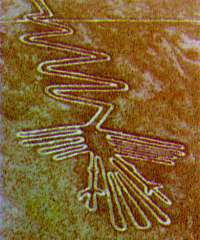 |
| AVERAGE ANNUAL TEMPERATURE: DISTANCE: ALTITUDE: TRAVEL TIME BY ROAD: |
22ºc 460 KMS FROM LIMA 600 METERS ABOVE SEA LEVEL 6 HOURS FROM LIMA APPROXIMATELY |
More information The Nazca Lines >>>
PARACAS, ONE OF THE WORLD’S MOST VALUABLE AND IMPRESSIVE COASTAL HABITATS
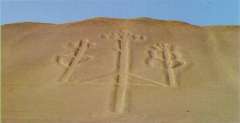 |
Millions of years ago, a cataclysmic earthquake brought about changes to the land, that together with the confluence of two great ocean currents, El Niño and la Peruana or Humboldt, created an environment where aquatic life could flourish, encouraging abundant growth of plankton and phytoplankton, essential components for marine life. There is an astonishingly diverse variety of biologic life. |
| In Paracas reserve, scores of sea lions can be seen lazily basking in the sun align with condors and giants turtles easing their way through the water. The winds, the sea temperature, and other weather factors have created a habitat for thousands of species of marine fauna and flora, ranging from tiny fish and mollusks to great seals. The scenery is beautiful, a fact that ancestral cultures were well aware of, because it was in this rich area that a major civilization flourished. Paracas, famous for its weavings, the finest in the world, inimitable even today. |
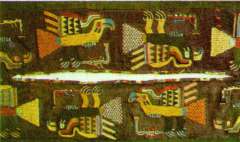 |
Paracas opens up a wealth of possibilities for tourists. You can enjoy them all thanks to the facilities now available.
| AVERAGE ANNUAL TEMPERATURE: DISTANCE: TRAVEL TIME BY ROAD: |
22ºc 250 KMS. FROM LIMA 3 HOURS FROM LIMA APPROXIMATELY |
Continuing south on the Pan American highway is Pisco, a port city that gave its name to the clear white grape alcohol used in Peru’s national drink, the pisco sour. The invention of pisco was actually a mistake by Spaniards trying to introduce grapes and wine production into the dry coastal area of the New World. However, once they tried this potent, yet smooth, beverage they decided it had merit of its own.
A pisco sour is a cocktail made from pisco, lemon juice, egg white and sugar syrup, whipped and served with a dash of Angostura bitters.
The city, now with 80,000 inhabitants, joined the bandwagon when revolutionary fever overtook the continent in the early 1800s. Half a block from the town’s Plaza de Armas is the Club Social Pisco used as the headquartersfor liberation leader General Jose de San Martin while he was fighting the Spaniards.
A statue to this Argentine hero of the independence war is found on the main plaza – the same square where boat trips to the Ballestas Islands can be arranged. Originally, Pisco stood in another spot not far away. But an earthquake in 1687 and subsequent pirate attacks badly darn_ aged the structures in the city, prompting the viceroy, Count de la Monclova, to order it moved. Construction of the opulent baroque cathedral started shortly thereafter, only ending in 1723.
Pisco’s small airport serves as the emergency landing strip when heavy fog prevents planes from descending in Lima; passengers are then bused to the Peruvian capital or wait until the weather clears before flying north again. From 1960 to 1970, small propeller planes of the foreign-owned Consorcio Ballenero buzzed the waters offshore in a now defunct project to localize and count groups of whales that regularly ply Peru’s coast.
Then, in late 1988, Peruvian scientists, in conjunction with experts from the Natural History Museum at the Smithsonian Institute in the United States, announced the appearance of a new whale species. Named the Mesoplodon Peruvianus, one of these mammals was inadvertently picked up by fishermen working the waters between Pucusana and Pisco. The 4-meter (13foot) long whale is one of the smallest members of the whale family.
Poor man’s Galapagos: Some 5 km (9 miles) down the coast from Pisco is the Bay of Paracas, named after the Paracas winds – blustery sand storms that sweep the coast. Transformed into an ecologically-delicate national park, and a popular spot for New Year’s Day camping, Paracas is a wildlife reserve boasting a wide variety of sea mammals and exotic birds, among them the red and white flamingos that allegedly inspired hero General San Martin to design the red and white independence flag for Peru.
The beach is lovely, although craggy for swimming and the waters contain jellyfish. A monument marks where San Martin set foot in Peru on September 8, 1820 after liberating Argentina. (A law passed by the National Congress makes September 8 a provincial holiday.)
Not long after the Argentine’s arrival, a shipload of British troops under the command of Lord Cochrane dropped anchor in the same bay and headed to shore to help San Martin plan his strategy against the Spanish. The British motivation was to break Spain’s monopoly on trade in the region.
The famous Candelabro, a candelabra-shaped drawing scratched on to the highest point of a cliffside overlooking the bay, can be seen from the beach although it is best viewed from a boat. Some scientists link the drawing to the Southern Cross constellation; others say it is actually a stylized drawing of a cactus – a symbol of power from the Chavin culture, which flourished farther north but whose influence has been found great distances from its seat of power. The magic associated with the cactus is related to its hallucinogenic powers and use by high priests in ancient Indian cultures.
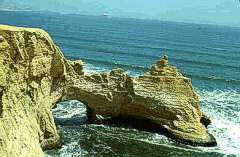 |
Recommended from the Bay of Paracas is a visit to the Ballestas Islands, part of a national reserve where sea lions, seals, penguins, guano birds and turtles rarely found at this latitude converge before photo-taking tourists.Dozens of bird species thrive here, among them albatross, pelicans and seagulls. Also worth a visit in a fishing boat or launch is Punta Pejerrey, nearly at the northernmost point of the isthmus and the best spot for seeing the Candelabro. |
| On the exact opposite side of the isthmus is Punta Arquillo and the mirador de los lobos, or sea lion lookout point. This rough androcky place, reachable only after an hour’s trek on foot, takes visitors to a spot above a sea lion refuge. Looking down, the adventuresome find themselves nearly face to face with a congregation of noisy sea mammals. | 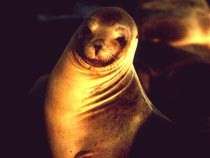 |
On lucky days, a look skyward is rewarded by the sight of a pair of condors soaring above. These majestic birds sweep down on sea lion carcasses, then use the intense coastal winds to wing themselves up to the high altitudes they normally frequent. So well-known was the Andean birds’ presence at Paracas that, when the nature reserve was being named, one scientist pushed for the moniker “Parque Nacional de los Condores” (Condor National Park).
During the last century, this region was important for its guano – mineralrich bird droppings used as fertilizers in Europe. Extensive exploration of the peninsula is best done with the help of a guide as paths are not clearly marked and it is easy to become lost. In June and August, Paracas is foggy – a reaction to the heat and extremely sparse precipitation combined with the water-laden ocean winds that caress the coast. A meteorological office here recorded only 36.7 mm (11/2 inches) of precipitation during a 20-year period.
